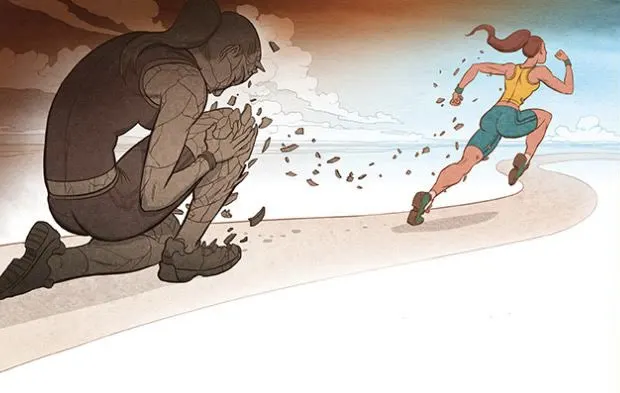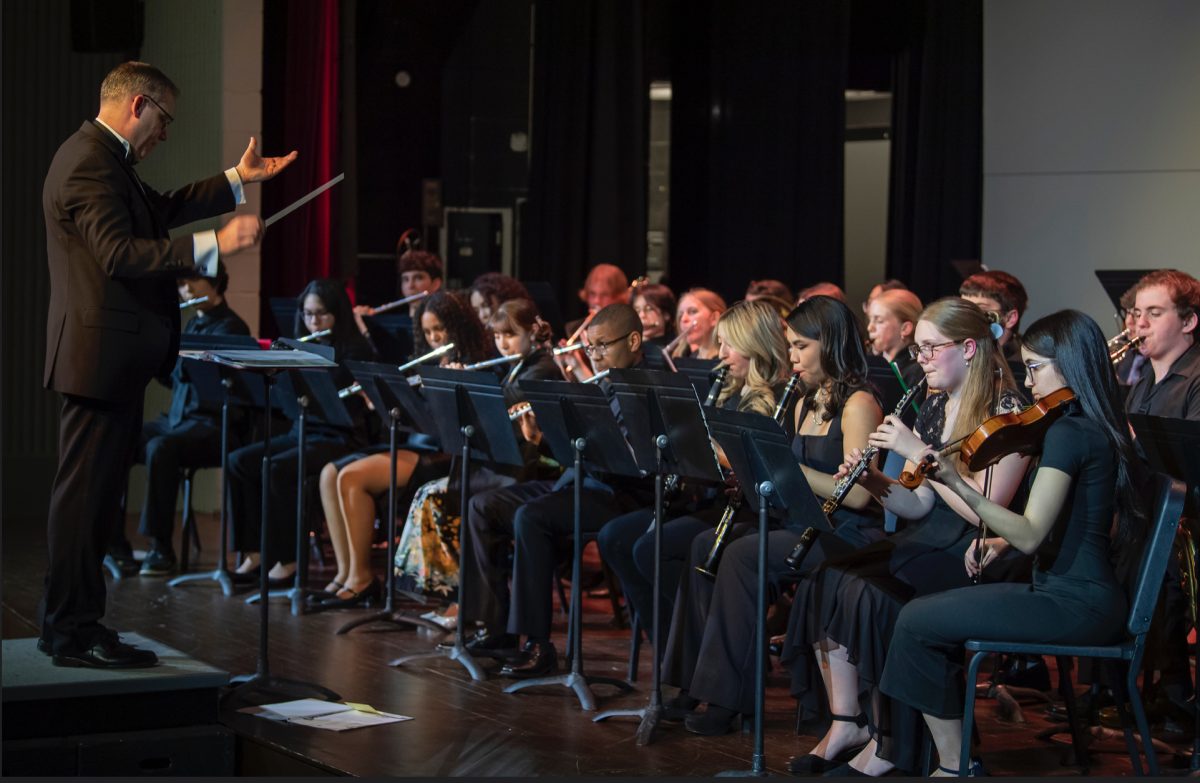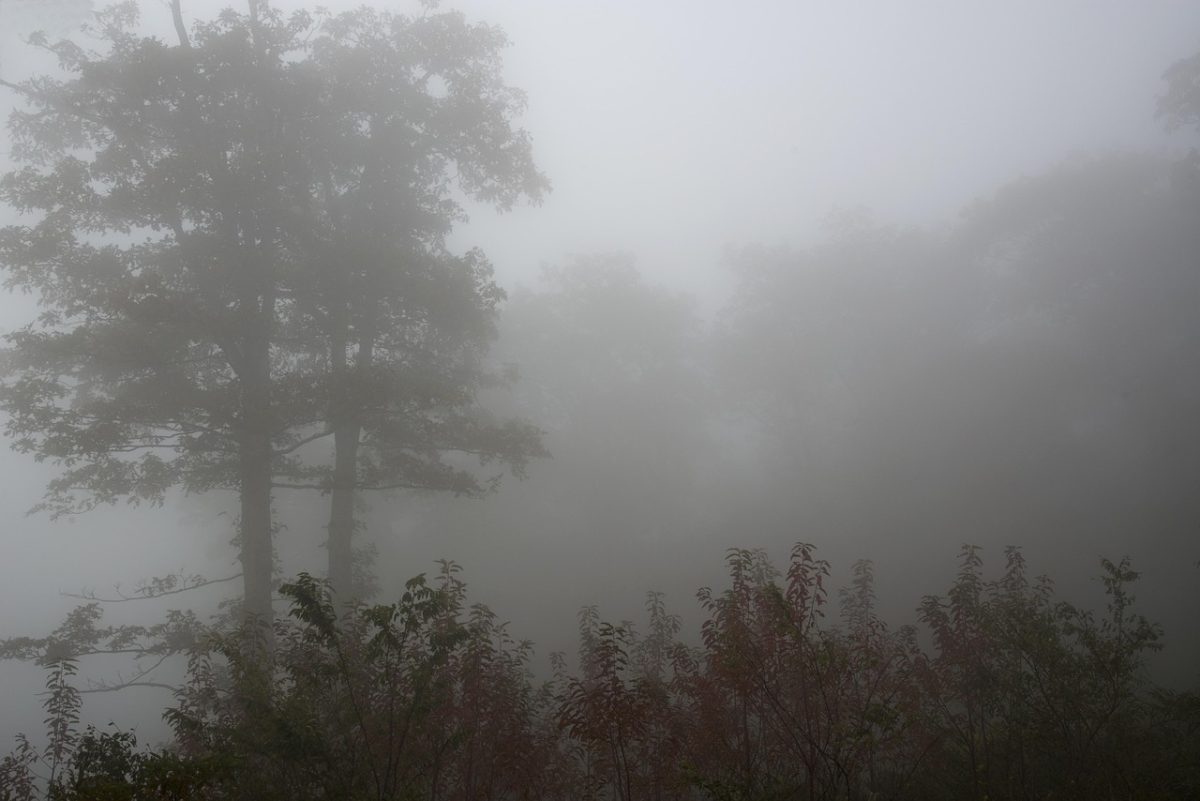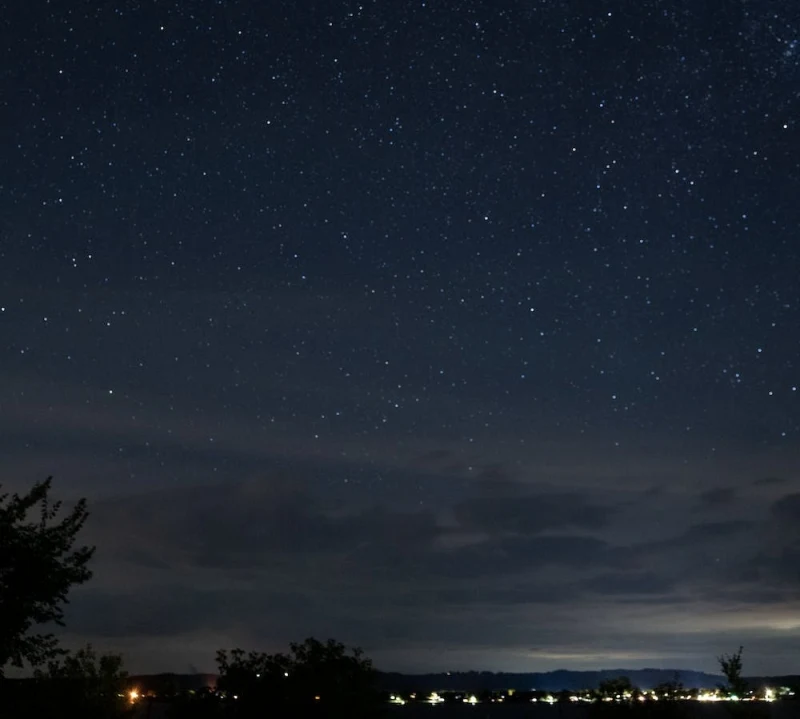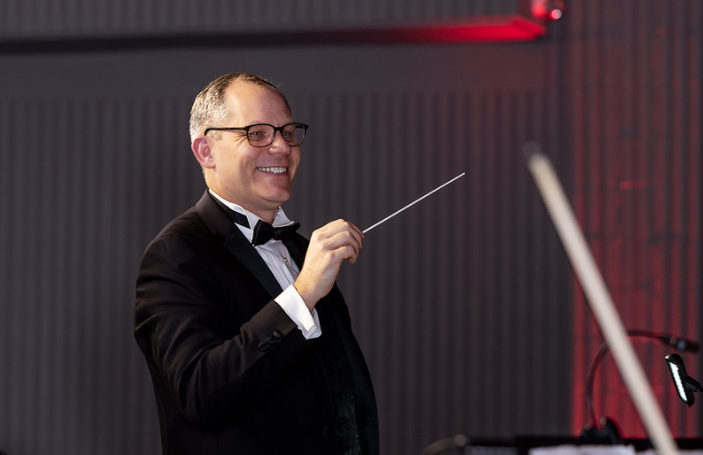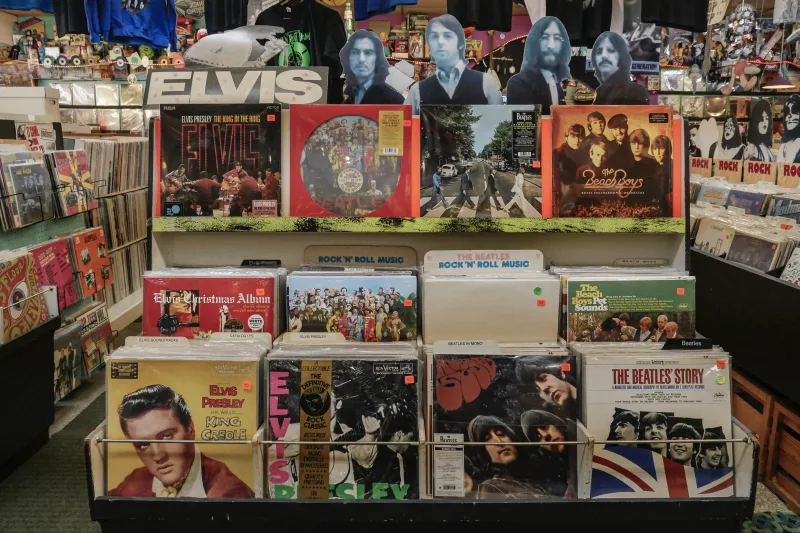By Alejandro Carter ’25
Have you ever wondered where the rock and roll genre began, and where it’s been over the years? Or maybe you’ve wondered who some of your favorite bands’ influences might be? Many modern bands cite their biggest inspirations as being some of the most influential bands and artists of the rock genre. Rock music today, including all the various genres such as psychedelic rock, folk rock, hard rock, metal, grunge, classic rock and soft rock can be traced all the way back to the 1940s and the blues music of the South. But in the 1950s, artists took traditional blues and changed it up to how they saw fit, creating rock and roll.
Chuck Berry is widely credited with being one of the most important forerunners of rock and roll. He pioneered a new sound that contradicted all the musical norms at the time, including two of his most iconic songs and rock and roll staples, “Rock and Roll Music” (Released September, 1957) and “Johnny B. Goode” (Released March 31st, 1958). If it weren’t for Chuck Berry’s contributions to the rock and roll genre, many artists and bands would have most likely never been formed or become the influential legends we see them as today, including the likes of The Beatles, The Beach Boys, The Rolling Stones and artists like Elvis Presley and Jimi Hendrix. The butterfly effect of Berry’s influence is seen throughout all of rock as a whole. While Berry himself has had a troubled history with the law and abuse, his contributions to rock should not overlooked, as his influence on the genre is monumental.
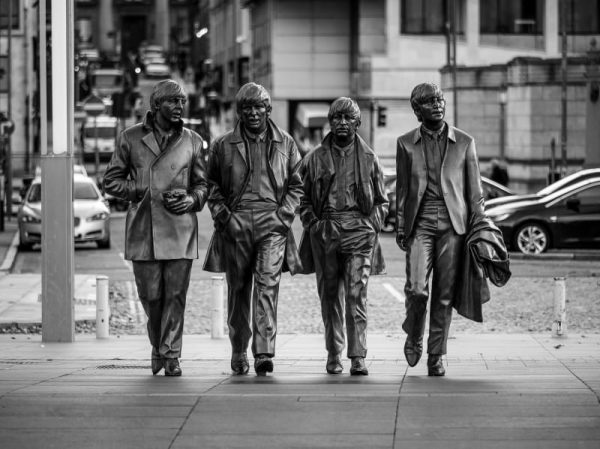
In Liverpool at the beginning of the 1960’s, John Lennon, Paul McCartney, George Harrison and Ringo Starr would come together to form The Beatles. The formation of the band marks another one of the most important and influential moments in rock history. With them, The Beatles would cause hysteria all over Britain, also known as Beatlemania, which would become an international phenomenon soon after. Throughout their short run of around 10 years of operation, The Beatles completely changed the music scene with their influence and pioneering of new musical styles, for example, The Beatles are cited as being the pioneers of the concept album and the music video. The Beatles saw mass popularity during a time in music history known as the British Invasion, where many bands, artists and pop culture from Britain grew rapidly in popularity in the United States.
Jimi Hendrix, another artist from the 60s, is also credited with progressing the rock genre and the electric guitar, using styles and techniques such as “wah” and fuzz pedals, which were not being widely used, and new picking techniques on the guitar which Hendrix adapted from old Blues styles. These new sounds helped Hendrix to stand out from other artists, and maintain a significance in rock even to this day. Some of his most influential songs include “Purple Haze” and a cover of Bob Dylan’s “All Along The Watchtower”. Hendrix’s life was tragically cut short at the age of 27, placing him in a unique group of artists along with Kurt Cobain, Janis Joplin and Jim Morrison known as the “27 Club”, artists who all passed away at the age of 27.
Jimi Hendrix and The Beatles weren’t the only artists who utilized their guitars and saw a boom in popularity during the 60s and early 70s. Another group which formed in California during the beginning of the decade were The Beach Boys. The Beach Boys had their own musical style based around the 60s surf scene. Their first single, “Surfin’”, would lead them to be signed by Capitol Records in 1962. However, their big hit would come in 1964 with the release of “I Get Around”. While The Beach Boys wouldn’t have as many #1 singles as The Beatles, they are still one of the most influential rock bands of all time and created incredibly influential works, one such example being Pet Sounds, an album that is said to be one of the greatest of all time, and is even cited by Paul McCartney as being the inspiration for Sgt. Pepper’s Lonely Hearts Club Band, which is also known as one of the greatest albums of all time.
While harder rock genres were growing in the 60s and 70s, other forms of rock were growing. A folk rock movement grew out of the 60s. This genre uses acoustic instruments rather than the heavily distorted guitars of other rock genres, and it tends to focus more on classic American and British folk music, with a heavier focus on vocals and lyrical subject matter. Popular bands and artists from this genre include The Mamas & The Papas and Simon and Garfunkel. Soft rock would also grow during this time, with similar features to folk rock, such as acoustic instruments and a focus on vocals. The Mamas & The Papas’ in particular recorded a very successful song, “California Dreamin’“.

The 70s saw a continuation from the late 60s British Invasion sound. Most notably, classic rock would continue to be developed by bands and artists like Bob Dylan, The Rolling Stones, who were seen as ‘competitors’ to The Beatles, and other artists such as David Bowie. The 70s also saw the evolution of hard rock from bands such as and AC/DC, Led Zeppelin and Aerosmith. Hard Rock is usually defined by heavily distorted electric guitars and loud vocals. Hard rock is commonly used in conjunction with metal, and the two genres are frequently mixed up, but they do have differences that define each. Metal, which also began to grow in the 70s, is typically a faster-pace genre than hard rock and has long guitar solos.
Art rock and psychedelic rock are two terms used loosely with each other to describe a genre of rock with a focus on instrumentation and somewhat bizarre concepts. Pink Floyd dived into this psychedelic sound which would eventually become synonymous with their name. The psychedelic sound is usually categorized by a large use of electronic sounds, feedback loops and experimental concepts. In 1973 Pink Floyd released their biggest album The Dark Side of The Moon, which holds the record for the longest time any album stayed on the US Billboard top LPs and Tape chart, staying for a total of over 972 nonconsecutive weeks. Many artists are credited for popularizing this sound, some being King Crimson, The Doors and more recently Tame Impala.
From the 70s into the 80s, other artists and bands came out with their takes on the rock genre, such as Bruce Springsteen, Lynyrd Skynyrd, Queen, ZZ Top, The Who, Electric Light Orchestra Steely Dan and Fleetwood Mac. All of these artists contributed to the rock genre, each with their own hit songs. Queen in particular, with “Bohemian Rhapsody“, a song with a style that had never been seen before and has yet to be replicated as successfully since. Lynyrd Skynyrd also released “Free Bird“, a song with an almost five minute long guitar solo.
At the end of the 70s and the beginning 80s, pop rock was beginning to grow. The combination of the classic rock sounds and new additions of catchy hooks and synths would merge rock with the sounds of disco and pop and make another form of the classic genre. Artists who may fall under this genre include Prince, U2 and Tears for Fears. These artists each created incredibly popular songs like “Purple Rain” by Prince, “With Or Without You” by U2 and “Everybody Wants To Rule The World” by Tears for Fears.

Throughout the 80s, many different bands came and went. Most notably, there was a rise in popularity of metal bands. Metal, as stated above, is a genre of rock that has very heavily distorted guitars, long guitar solos and loud vocals. Notable metal and hard rock bands include KISS, Metallica, Megadeth, Black Sabbath, Van Halen and artists like Ozzy Osbourne. While the metal genre has been around since the 60s, it saw a large boost in popularity in the 80s. Metal split off in to many different subgenres, the most notable genre of the 80s being hair metal, a more pop and produced sound which saw a large boost in popularity throughout the USA.
Despite the hair metal bands of the 80s showing no signs of stopping, a counterculture was growing out of Seattle and would explode in popularity at the beginning of the 90s, marking the end of the glamorous metal bands. While many different names have been used to describe the genre, Grunge is the most widely accepted and used term. A genre which has its roots in Seattle, WA, grunge is everything that the metal bands of the 80s were not. It was rough, unproduced and far more underground. Some exceptionally notable grunge bands include Nirvana, Soundgarden, Pearl Jam and Alice in Chains. Grunge came at just the right time that it resulted in an explosion of popularity. Grunge began to lessen in popularity by the mid 90s, around the time of Kurt Cobain’s passing.
In the late 90s and into the 2000s, there were many different subgenres of rock that were formed, some examples being alternative rock and indie rock, which have seen major popularity into the 2010s. Successful bands to come out of this time include Green Day, Radiohead, the duo The White Stripes, Foo Fighters, Weezer, Red Hot Chili Peppers and Coldplay. Recently, fewer bands have been seen forming in mainstream music, rather there has been a rise of solo artists performing the instruments themselves or having a backing band. As seen in a lot of genres such as pop and rap, using computers to digitally create instrumental tracks has also become popular. Solo artists and digitally composed tracks may lead to a decrease in traditional rock bands, but the genre is growing more popular every day. With the introduction of streaming apps over the past few years, and bands utilizing social media to get their names out, more people are able to discover new music. The next big names are just around the corner, and nothing can tell where the genre will be taken next.








